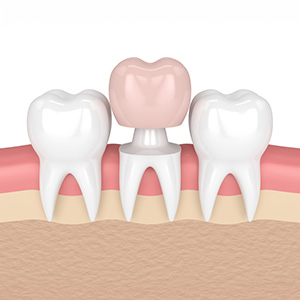Root Canal Treatment
We know no one is excited to get a root canal but, sometimes, it’s the best way to save your natural tooth. The good news is that with today’s techniques, root canal treatment is nothing to fear.



Endodontics to the rescue!
Severe tooth decay, extensive dental work, and injuries can reach the tooth’s pulp, causing damage or infection. If you’ve ever felt the unyielding, throbbing toothache that often results from this, you know it’s no joke.
Root canal treatment, technically called endodontics, can eliminate the infection to save the tooth. While root canals have gotten a bad rap, with modern tools and techniques, the procedure feels similar to getting a filling.
The tooth’s pulp contains nerves and blood vessels, which is why when it’s infected, it can be super painful. Root canal treatment stops the pain.
Root canal therapy is often the last resort to save your natural tooth, which is ideal for your oral health. The procedure has a high success rate.
Getting root canal treatment is faster and more affordable than the alternative, which is a tooth extraction followed by a dental implant or dental bridge.
What to expect when getting a root canal

Your dentist will carefully numb the area to be treated with local anesthetic, so you won’t feel anything during the procedure.

Once you’re numb, the dentist will make a small opening in the tooth to access the pulp chamber and root canals. They’ll use specialized instruments to remove the infected tissue.

Next, the dentist will clean and disinfect the pulp chamber and root canals. They’ll fill the spaces with a biocompatible material and seal the opening in the tooth.

Depending on the situation, you’ll probably need a permanent restoration, such as a dental crown, to protect and restore your tooth.
When is root canal treatment necessary?
Ever wondered why you might need a root canal? It’s all about saving your tooth when the soft tissue inside (the pulp) gets infected or damaged. This can happen from an injury, lots of dental work, or deep decay.
If left untreated, the infection could spread, causing more serious issues like tooth loss or even an abscess. But don’t worry, root canal therapy swoops in to eliminate the infection and pain!
What are the signs I need a root canal?
The only way to know for sure if you need a root canal is to see your dentist for an exam and x-ray. However, here are some signs to watch out for:
- Intense pain when chewing or biting
- Lingering sensitivity to hot and cold
- Constant pain and pressure
- A deep cavity
- A cracked or chipped tooth
- Swollen, tender gums
- A tooth that’s turned gray or black
- A pimple on the gums
Do root canals hurt?
Not at all! Modern root canal treatment is no more uncomfortable than getting a dental filling. You’ll be numb during the procedure, so you won’t feel much of anything.
After the anesthetic wears off, your tooth might feel a tiny bit sore for a day or two. However, the discomfort is generally mild and easily managed with an over-the-counter pain reliever.
Do I still need root canal treatment if my tooth doesn’t hurt anymore?
Some patients never have pain at all, yet still need a root canal. Others experience severe pain that eventually disappears. Unfortunately, this doesn’t mean the infection is gone; it means the pulp inside of the tooth is dying.
So, yes, it will still be important to treat the infection with root canal therapy. Otherwise, it can spread to the jaw, surrounding tissues, and, in rare cases, other areas of the body, such as the brain.

